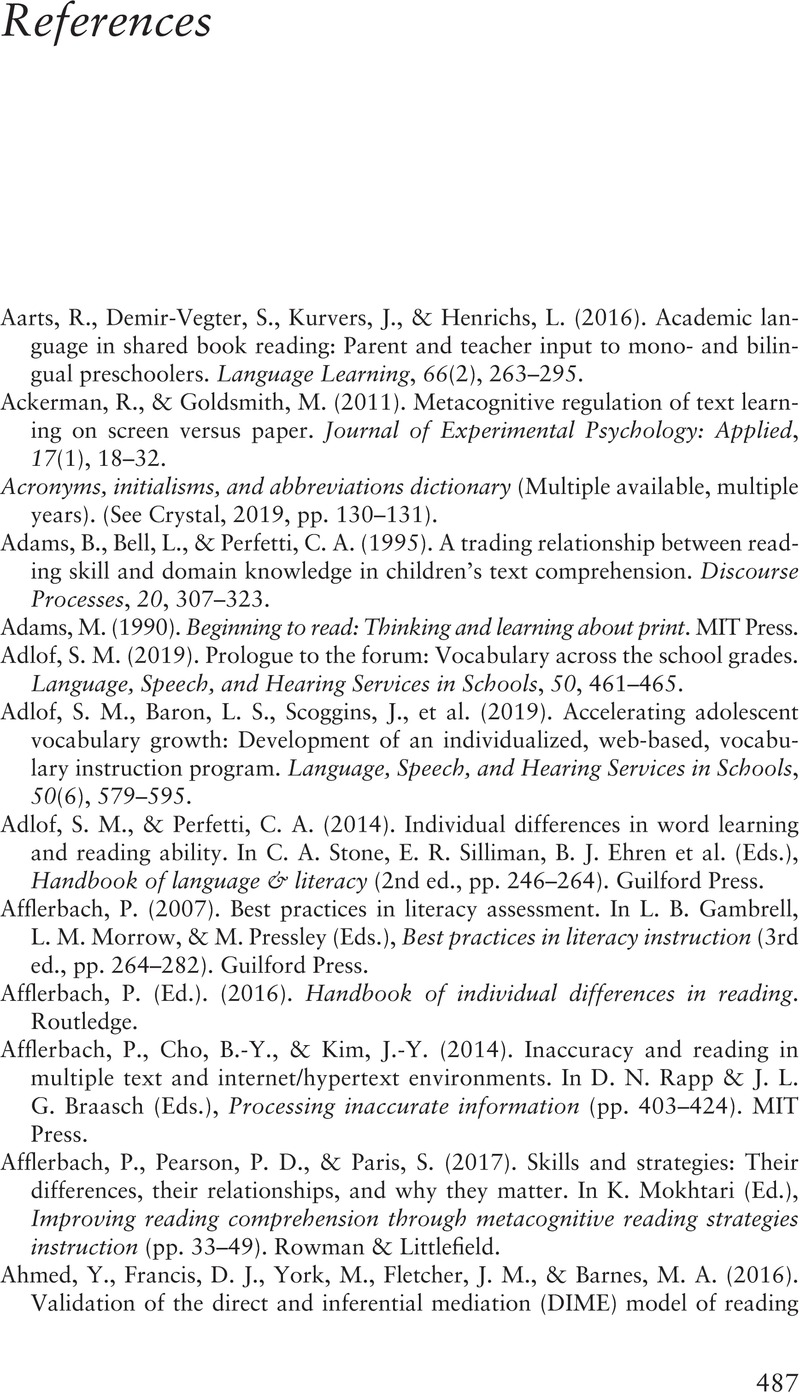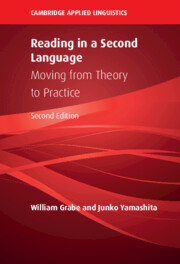Book contents
- Reading in a Second Language
- The Cambridge Applied Linguistics Series
- Reading in a Second Language
- Copyright page
- Dedication
- Contents
- Figures
- Tables
- Preface
- Part I Foundations of Reading
- Part II Patterns of Variation in Reading
- Part III Developing Reading Comprehension Abilities
- Part IV Expanding Reading Comprehension Skills
- Part V Applications of Reading Research: Instruction and Assessment
- References
- Author Index
- Subject Index
- References
References
Published online by Cambridge University Press: 01 September 2022
- Reading in a Second Language
- The Cambridge Applied Linguistics Series
- Reading in a Second Language
- Copyright page
- Dedication
- Contents
- Figures
- Tables
- Preface
- Part I Foundations of Reading
- Part II Patterns of Variation in Reading
- Part III Developing Reading Comprehension Abilities
- Part IV Expanding Reading Comprehension Skills
- Part V Applications of Reading Research: Instruction and Assessment
- References
- Author Index
- Subject Index
- References
Summary

- Type
- Chapter
- Information
- Reading in a Second LanguageMoving from Theory to Practice, pp. 487 - 556Publisher: Cambridge University PressPrint publication year: 2022

